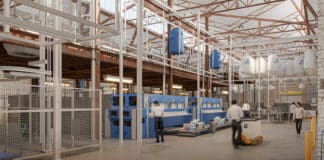Optimal workplace design is a key driver of organizational innovation, according to the U.S. Workplace Survey 2016 from Gensler. The survey uncovered a statistical link between the quality and functional make-up of the workplace and the level of innovation employees ascribe to their organization, and found that a high-performing workplace—one that prioritizes both individual and group work—creates an ecosystem of innovation across organizations and is a crucial predictor of how innovative an employee sees their company to be.
 In a survey of more than 4,000 workers across 11 industries, Gensler, the world’s largest architecture and design firm, found that the most innovative companies provide their organizations with a diversity of well-designed spaces in which to collaborate and to focus, as well as empowering employees with the ability to work when and where best suits their work needs.
In a survey of more than 4,000 workers across 11 industries, Gensler, the world’s largest architecture and design firm, found that the most innovative companies provide their organizations with a diversity of well-designed spaces in which to collaborate and to focus, as well as empowering employees with the ability to work when and where best suits their work needs.
“We are seeing that workplace design is a critical part of truly innovative companies’ success. On average, employees at innovative companies have better-designed, more functional workspaces that unlock creative potential,” said Diane Hoskins, co-CEO at Gensler. “Employees truly flourish when they have room to not only collaborate but also have space to focus, and are empowered to work when and how they work best—both within their workplace, and in other locations outside it.”
Creating An Innovation Ecosystem
 Gensler’s 2016 U.S. Workplace Survey data provides a window into the workplaces of “top innovators” as measured by Gensler’s Innovation Index – an average of six tested and validated questions, focused on innovation, leadership, and creativity. Top innovators are determined by segmenting respondents into four groups based on their Innovation Index scores and identifying those employees ranking their companies as the most innovative in the sample. These are the top innovators, employees and organizations who are getting the workplace equation right. By comparing employees with the highest innovation index scores—those in the top quartile or 25%—to those in the bottom quartile, Gensler’s Survey identified a suite of behaviors and spatial attributes that markedly increase innovation.
Gensler’s 2016 U.S. Workplace Survey data provides a window into the workplaces of “top innovators” as measured by Gensler’s Innovation Index – an average of six tested and validated questions, focused on innovation, leadership, and creativity. Top innovators are determined by segmenting respondents into four groups based on their Innovation Index scores and identifying those employees ranking their companies as the most innovative in the sample. These are the top innovators, employees and organizations who are getting the workplace equation right. By comparing employees with the highest innovation index scores—those in the top quartile or 25%—to those in the bottom quartile, Gensler’s Survey identified a suite of behaviors and spatial attributes that markedly increase innovation.
According to the Gensler’s Workplace Survey, the most innovative employees have the option to work in a wide variety of spaces that meet their needs, and use that option to maximum effect – whether they need individual space to focus, a conference room to brainstorm or learn a new skill, or a social space to chat with co-workers during a coffee break. Key findings on the habits of top innovators include:
- Innovators report spending only 74% of the work week at the office; less innovative employees spend 86% of time at the office
- Innovators are at least two times more likely to have access to, and use, cafeterias, coffee shops, and outdoor spaces
- Innovators report two times more access to amenities including specialty coffee, restaurants, gyms, and childcare facilities
- Innovators overall report two times more choice in when and where to work
Innovation by Design
Gensler’s 2016 U.S. Workplace Survey results account for organizations across industries, geographies and age groups – but solutions, Gensler says, must be company-specific. To inspire organizational innovation and optimize performance Gensler has developed a set of design action items every organization can consider to optimize the workplace and improve performance and innovation:
- Invest in more functional workplaces and effectively managing those functions most important to individual performance to make any space type – even open office – highly effective.
- Diversify beyond the desk by including a variety of group work spaces inside and outside the workplace. Innovators have access to, and utilize a greater variety of spaces in and out of the office.
- Empower the entire organizational community, not just senior leadership, with the ability to choose when and where to work. From 2013 to 2016 choice at all levels of an organization fell, but senior leadership continues to report greater choice than more professional or administrative staff.
- Connect every employee to the meaning behind their work, their company’s mission, and the broader organizational community with design strategies that support and impact corporate purpose.
The U.S. Workplace Survey 2016 is available online.





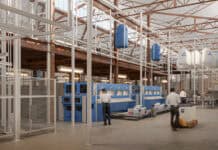
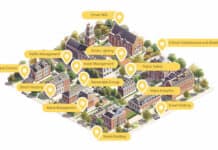
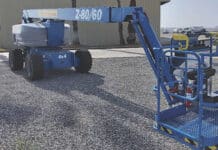
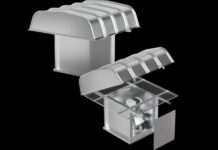


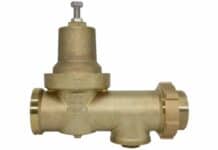





![[VIDEO] Job Order Contracting: Accelerating the Projects that Matter](https://facilityexecutivemagazine.kinsta.cloud/wp-content/uploads/2024/05/maxresdefault-324x160.jpg)
